Key Space Milestones of 2024
The New Year is a time to reflect. In 2024, the space industry amazed us with groundbreaking events and discoveries. Let’s dive into the most significant moments of the year!
Issue 109. Subscribers 35,611.
If you want to dive deeper into SpaceTech, Space Ambition co-founder Denis Kalyshkin is launching a WhatsApp group where, on a weekly basis, you will discuss trends, deals, niche specifics, etc. Join the community of like-minded people here.
Rocket Launch Market in 2024
There were 259 orbital launch attempts in 2024, a 17% increase from the 2023 record of 221. In 2024, private companies were behind 70% of all global launch attempts, continuing an upward trend from 65% in 2023 and 55% in 2022.
In 2024, of the 145 US launches, SpaceX accounted for 138, a staggering 95% of America’s rides to space:
132 Falcon 9 (1 failure).
2 Falcon Heavy.
4 Starship (near orbit flights).
China. In 2024, China carried out 68 launches, showing a slight increase from 67 in 2023 and 64 in 2022. The Long March 2D was the most frequently used rocket, with nine launches. In the commercial sector, Galactic Energy’s Ceres-1 stood out, with five successful launches leading the sector.
Europe. Europe had only 3 launches last year, behind countries such as Japan (7), India (5) and Iran (4). However, the situation is beginning to change. 2024 saw the long-awaited debut of the Ariane 6 rocket, and Vega C successfully resumed flights just a few months after Vega was terminated. These successes set the stage for increased launch frequency in Europe in 2025.
New Zealand. Yes, we put New Zealand in a separate category! 13 out of 14 Rocket Lab launches have come from New Zealand. Respect!
That increase in overall launches was driven by SpaceX, which performed 134 Falcon 9 and Falcon Heavy launches in 2024, up from 96 in 2023. The company performed more orbital launches than the rest of the world combined. SpaceX broke a number of records:
September 10, 2024: SpaceX conducted its 250th successful Falcon 9 launch, solidifying its position as the leading commercial operator.
December 12, 2024: SpaceX set a new record with 100 launches in a single year.
Of course, the success of SpaceX is unsurprising, but the most striking event was the test launches of Starship. There were as many as 4 test flights with testing of key systems:
The stage undocking system was developed, and the Mechazilla ground system successfully caught the rocket's stage. This opens up the possibility of reuse, which is a key advantage of Starship.
Engines have been tested: for the first time in space, the Raptor engine was tested for weightlessness.
The tests of the heat shielding went perfectly: the ship withstood re-entry heat upon entering the dense layers of the atmosphere.
Landing in the Indian Ocean went exactly as planned. Precision landing realized.
The flight is another step SpaceX is taking toward building a fully reusable spacecraft to conquer the Moon and Mars.
Musk promised:
25 Starship launches in 2025.
100 launches in the coming years.
The first human on Mars by 2030, with plans to establish a self-sustaining city there within 20 years. Sounds optimistic, but we want to believe!
On the other hand, Starship can seriously change the space services market. It is stated that the cost of launching a payload into orbit with Starship will be about $100 per kg, which is ten times lower than current rates. This will change the state of affairs in space significantly. You can read a detailed analysis of Starship's impact on the aerospace sector in our great article.
Notable Rocket Launch Events
A number of key events happened in space launches as well:
Ariane 6. On July 9, the new Ariane 6 heavy-lift launch vehicle lifted off from Kourou, ending a year-long delay at the European Space Agency, which had previously had to turn to the United States for help. The project cost more than the planned 2.4 billion euros, reaching more than 4 billion, and was financed by 13 countries, with France and Germany being the main contributors. The rocket can launch satellites of up to 11.5 tons into orbit, but the first launch was plagued by problems - an upper stage engine failure resulted in space debris. Despite criticism for its high cost and outdated design, Ariane 6 gives Europe independent access to space and an alternative to SpaceX.
Delta IV. On April 9, 2024, United Launch Alliance's (ULA is an American launch service provider formed in December 2006 as a joint venture between Lockheed Martin Space and Boeing Defense, Space & Security) Delta IV Heavy rocket made its final flight, successfully placing a classified National Reconnaissance Office satellite into orbit. This was the final launch of the Delta IV Heavy, ending the 60-year history of the Delta family of rockets, which began in 1960. More than 300 Delta rockets have been launched with a success rate of 95%. ULA will now focus on operating its new Vulcan Centaur rocket, designed to replace the aging Atlas V and Delta IV Heavy launchers.
Vulcan. Meanwhile, the Vulcan rocket is under certification - the first 2 launches were conducted in 2024, the second of which had engine problems. Nevertheless, more than 10 launches are planned for 2025. For now, the Space Force relies solely on SpaceX's Falcon 9 and Falcon Heavy rockets for National Security Space Launch (NSSL) missions. This dependency underscores the urgency of Vulcan's certification to meet the program's two-provider mandate. Under the NSSL Phase 2 contract awarded in 2020, ULA and SpaceX split a slate of about 35 missions. ULA has only launched one of these on its legacy Atlas 5 rocket, leaving as many as 25 launches still to be completed by Vulcan by fiscal year 2027.
Electron. Rocket Lab set an Electron launch record. For almost a decade, we’ve been waiting for a rocket-maker to offer some meaningful competition to SpaceX, and Rocket Lab stepped up in 2024 with its Electron. The small launcher became the fastest commercial rocket to 50 flights and set a new company record with 15 launches (and counting) in 2024.
No Neutron: Rocket Lab’s next launch vehicle was expected to be ready for launch in 2024, but now the rocket’s maiden flight is delayed until 2025. Neutron is hardly the most delayed rocket mentioned in this piece, but it highlights the fact that the world is still waiting for a Falcon 9 competitor. It should be noted that Neutron already has commercial customers.

What About Other Countries?
China's space achievements are impressive with 68 launches in 2024:
Tiangong station has hosted four missions in 2024 - two crewed missions and two cargo missions.
Chinese astronauts performed a world record-breaking 9-hour spacewalk outside Tiangong space station.
The return of soil from the Moon.
The launch of China's space internet constellation.
China plans a base on the Moon and a landing by the 2030s.
It is worth noting the active development of private space tourism in China. The sale of tickets for space tourism has started! Two vouchers for a 12-minute trip to 2027 were sold for one million yuan (about $140,000) on the Taobao platform in seconds. The Nebula-1 rocket is being developed by Deep Blue Aerospace, and among the first tourists will be its CEO. Another Chinese company CAS Space is planning to launch its tourists by 2028 with a price tag of ~$300,000-400,000 per seat.
India is becoming an increasingly strong player in the space industry, having conducted 7 launches this year. That said, India has decided to postpone its first manned space launch as part of the Gaganyaan mission until 2026. Indian astronauts are to be sent into space on an indigenously developed rocket. As the head of the Indian space agency said, “We don't want to repeat the fate of the American Starliner, so we are approaching carefully.” Sounds like confidence before a big step. If all goes smoothly, India will become the fourth country (after the US, Russia, and China) to send a man into space on its own in 2026.
It is also worth noting the new players in the market. This year was unique for the Middle East - several countries made ambitious steps. First of all, Turkey is building a spaceport in Somalia. This spaceport is a logical continuation of Turkey's 10-year space program, introduced in 2021. It includes missions to the Moon, and development of satellite technologies and construction of new facilities. It is noteworthy that over the last decade Turkey has seriously increased its space budget: from $5 million in 2013 to $63 million in 2023.
Iran is not staying on the sidelines either. On December 6, a Simurgh rocket launched the Fakhr-1 military satellite into orbit. Notably, Iran has actually become an independent space country - launching its satellites on its own rockets.
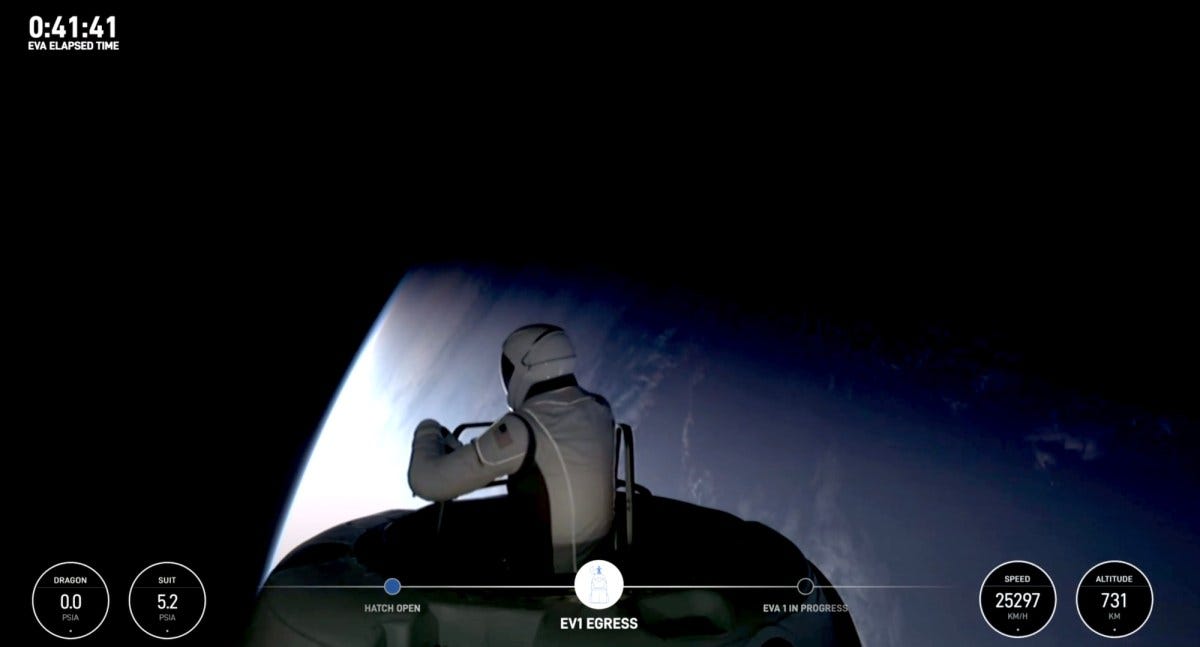
Manned Missions and Space Tourism
This year, 18 people were sent to the ISS. Among them:
A short mission from Axiom Space AX-3 with 4 astronauts for 21 days.
2 SpaceX missions on the Crew Dragon spacecraft.
2 missions by Roscosmos on Soyuz spacecraft.
1 Starliner test flight from Boeing with 2 astronauts.
It is noteworthy that despite the political situation, joint missions of cosmonauts from Russia and astronauts from the USA continue. 1 cosmonaut is always present on the Dragon spacecraft and vice versa. This is important for safety reasons, so that in case of an emergency the cosmonauts and astronauts will be able to return on either ship with knowledge of it.
The spaceflight records have just been rewrittenen. Russian cosmonaut Oleg Kononenko set a new mark for most total days spent off Earth, eclipsing the previous record of 878 days in space over 5 flights.
On January 26, humanity quietly matched a record with 20 people simultaneously in space. The International Space Station hosted 11 individuals, including its seven long-term crew and four visitors from the private Ax-3 mission. China's Tiangong space station had three occupants. Meanwhile, six people were aboard Virgin Galactic's VSS Unity during its Galactic 06 mission, with four passengers and two pilots. The Unity flight lasted about an hour, from liftoff to touchdown, contributing to this unique moment of shared human presence in space.
Another key event in astronautics was the Polaris Dawn mission. Billionaire Jared Isaacman (incidentally, the new head of NASA) and engineer Sarah Gillis became the first private astronauts to make a spacewalk. The mission broke a number of records. Apogee (the highest point of the trajectory) was at 1400 km above the Earth, which is the highest point of orbit a manned spacecraft has ever flown to, breaking the record set by Gemini 11 (1368.9 km), and the farthest distance from Earth anyone has flown since the 1972 Apollo 17 mission of NASA's Moon program. This shows that there are more and more opportunities for space tourists! Our great article on the current state of space tourism.
Big changes in the US aerospace sector
An important reshuffle of key space officials is also worth noting. Trump decided it was time for space to become even more private, and announced the appointment of Jared Isaacman, billionaire and space walker, to head NASA. And Ilon Musk is now officially a government employee.
Isaacman is 41 years old and is the founder of Shift4 Payments, Worth an estimated $1.9bn. He has been in orbit twice on SpaceX's Inspiration4 (2021) and Polaris Dawn (2024) missions. He wants to go further and participate in a manned Starship launch. We wonder how NASA will develop when its head is a businessman. Apparently the focus is on commercial space after all.
What does this mean for space? One thing's for sure: it won't be boring. NASA, SpaceX and the federal government are now on the same team, and their new roles promise even more ambitious projects. We're seeing a trend of space becoming more and more private, which means flights to the Moon and Mars are getting closer!
Boeing's difficulties
In 2024, an important event was the Boeing Starliner flight to the ISS. After the closure of the Space Shuttle program, NASA began ordering ships to deliver astronauts to orbit from private companies. SpaceX successfully accomplished this task, but Boeing had problems.
On June 5, the Starliner delivered two astronauts to the ISS on its test flight, but due to malfunctions, including helium leaks and engine failure, the ship was unable to return with the crew. The astronauts ended up stranded on the ISS for several months and were returned to Earth on a modified Dragon capsule from SpaceX, while Starliner returned empty. Imagine the astronauts being stuck on the ISS for months instead of a couple weeks! We must have felt something like this during the pandemic.
Suborbital flights
Meanwhile, Blue Origin has launched New Shepard four times this year, with one mission carrying 12 payloads and no passengers. This was the ninth human spaceflight mission overall, and the third of 2024.
Now Blue Origin is developing a new rocket, New Glenn. This rocket will open up access to orbital space tourism and will also be able to launch payloads into orbit.
Virgin Galactic is also going forward, in August company launched its seventh, and last flight with the Unity ship. 2 missions have been launched in 2024 with 11 people on board (three of them pilots). Virgin Galactic is developing a new Delta spacecraft, which will significantly increase capacity. The company plans to operate about 125 space flights annually, carrying 750 passengers at $600,000 per ticket, generating $450 million in revenue and approximately $100 million in EBITDA. With an expanded fleet of four spacecraft and two mother planes, they aim to conduct 275 flights per year, yielding $990 million in revenue and $450-500 million in EBITDA. Additionally, by adding a second spaceport in Europe or the Middle East with four more spaceplanes and two motherships, the company projects annual revenue of $1.98 billion and adjusted EBITDA of $1-1.1 billion.
There are other ways to be a space tourist. For example, the company Space Perspective is developing a balloon that will take you to an altitude of about 30 kilometres. Space Perspective completed 1st uncrewed balloon flight to the edge of Earth's atmosphere this year. The company says this trip will be as comfortable as renting a hotel room with a beautiful view, a bed, and WiFi. Currently, a seat aboard Space Perspective's space-lift costs $125,000, but future company plans for a larger capsule to accommodate a higher number of passengers may reduce that price "somewhere well below $100,000".
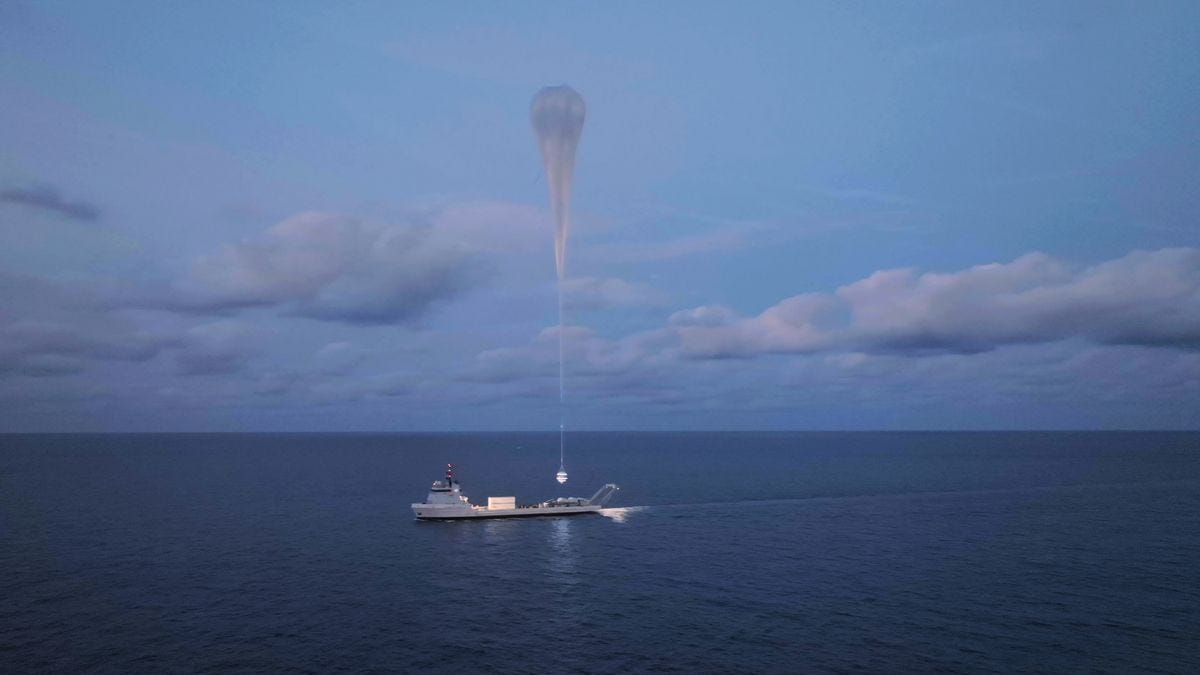
Moon Missions
A lot of interesting things happened on the Moon!
China successfully launched the Chang'e 6 mission and brought back to Earth about 2 kg of regolith from the far side of the Moon, for the first time ever. Scientists can now apply to study exotic samples from the far side of the Moon. The basalt fragments studied are close to 2.83 billion years old. Meanwhile, China reports plans to build a lunar navigation system consisting of more than 30 satellites and land the first astronauts by the 2030s. Intriguing!
IM-1 by Intuitive Machines (USA) marked the first successful soft landing on the Moon by a private company, while Odysseus became the first American-built spacecraft to achieve a soft lunar landing since Apollo 17 in 1972. The mission was performed as part of Commercial Lunar Payload Services (CLPS), a NASA program under contract with companies capable of sending small unmanned interplanetary stations to the Moon to support the Artemis lunar program. The day after landing, Intuitive Machines said the vehicle had rolled onto its side, but that didn't stop it from operating for 6 days before the lunar nightfall.
Japan's JAXA's SLIM lander also successfully landed on the Moon, with Japan becoming the fifth country to perform a soft landing on the Moon. Of note is the unprecedentedly precise landing - the lander landed 55 meters from the planned landing (Second place went to China's Chang'e 3 landing module, which in 2013 landed about 90 meters from the target landing site).
Having said all that, it's worth noting that the Artemis 2 mission is being postponed again: the manned Artemis 2 mission, which will be the first lunar mission since 1972, is now scheduled for April 2026. And the astronaut landing for Artemis 3 is pushed back to mid-2027. In fact, even 2027 is looking pretty space ambitious.
The reason for the postponement is simple and quite expected - a thorough check of the Orion spacecraft after the Artemis 1 mission. Artemis 1 was a test launch of the spacecraft to orbit the Moon in unmanned mode. Then the heat shield during re-entry into the atmosphere did not behave as expected. There is also an opinion that it is possible to switch from SLS rocket to Falcon Heavy or Starship to optimize costs, but so far this is all at the rumor level.
However, at the IAC in Milan, AXIOM Space presented a lunar spacesuit in collaboration with the fashion house Prada. The AxEMU spacesuit, developed for NASA's Artemis 3 mission, blends cutting-edge technology with design elements from Prada. Built for the harsh conditions of the Moon's southern pole, it includes 4G/LTE communication, a helmet-mounted HD camera, and biometric monitoring. The price tag is over a billion dollars.
Mars Analog Missions
2024 can be called effective in terms of preparations for a mission to Mars. A number of Martian analog missions were conducted.
First of all, I would like to mention the AMADEE-24 mission by the Austrian Space Forum, in which I was fortunate enough to participate. I was a mission control specialist based in Vienna when 6 astronauts were in isolation at a simulated base in Armenia. A whole month was spent researching and testing instruments, rovers, and procedures for a future Martian mission.
In Russia, the Sirius-23 project, a year-long isolation experiment with a crew of 3 men and 3 women, was completed, focusing primarily on the psychological and physical aspects of isolation.
NASA's CHAPEA mission, which began in 2023, marked the year-long simulation of a Mars mission. The crew of 4 researchers were living in isolation at a habitat designed to simulate life on the Red Planet, conducting experiments on physical and psychological effects in extreme environments. This mission aimed to help NASA better understand the challenges astronauts might face on long-duration space flights and pave the way for future crewed missions to Mars. The team’s work will provide valuable insights into human resilience and adaptability in space.
The Indian Space Research Organization (ISRO) has launched the first analog space mission in Leh, Ladakh, to simulate life in an interplanetary settlement. The mission uses a compact inflatable module called Hab-1, which has everything needed for autonomous living - a hydroponic farm, a kitchen and sanitary facilities.
The World's Biggest Analog mission is planned for 2025. 12 habitats and more than 100 crew members will participate in this mission! The mission's goal is to answer the question, "how will we live and work in Space as a community?". For the first time, an analog mission will be conducted in parallel in a large number of bases. Stay tuned to the website and OEWF social media to participate.
If you are inspired by such projects, I have detailed the experience of participating in a Martian mission and how to become an analog astronaut and participate in such missions in this article.
More on the Science and Tech
There was a lot going on in the world of science, deep space, and SpaceTech. Let's mention just a couple of projects, and we'll do a detailed review in the following articles:
Europa Clipper. Europa, a moon of Jupiter, is considered one of the most promising places to search for extraterrestrial life due to its subglacial ocean of liquid water. In October 2024, NASA launched the Europa Clipper mission, which will perform gravitational maneuvers around Mars and Earth over the course of 5.5 years to reach Europa in 2030. The spacecraft will investigate the thickness and structure of the icy crust, confirm the presence of an ocean and analyze its composition and potential habitability.
Hera. The European Space Agency (ESA) on October 7 launched a mission that will assess how effectively humanity can protect the Earth from a collision with an asteroid. The mission has been named “Hera.” It will visit the asteroid Dimorphos, which was impacted by a NASA spacecraft. in 2022 as part of the DART mission. Hera will analyze the consequences of that impact. If the results are positive, it will lead to further developments, including strategies for dealing with the threat of a large asteroid impacting Earth.
Varda Space Industries. On February 22, 2024, the Earth saw the return the return of the Varda Space Industries spacecraft, which brought back unique pharmaceuticals 'grown' in microgravity from orbit. This event was a significant breakthrough for both the space and pharmaceutical industries, as it was the first successful experiment in the production of drugs in space, which lasted more than eight months. Inside the capsule were crystals of ritonavir, a drug used in the treatment of HIV/AIDS. This mission opens new horizons for space research, and Varda Space Industries plans to conduct such experiments on a monthly basis by 2026.
Space Debris. The Active Debris Removal by Astroscale-Japan (ADRAS-J) mission in April completed its rendezvous and began proximity operations around a large piece of space debris—a spent H-2A rocket upper stage. By early December, the spacecraft had approached within about 15 m. of the object, the closest approach to space debris by a commercial company through rendezvous and proximity operations. We're planning a comprehensive article on space debris detection technology.
In 2024, there were many interesting SpaceTech investments. That's why we decided to write a separate article about it, so stay tuned.
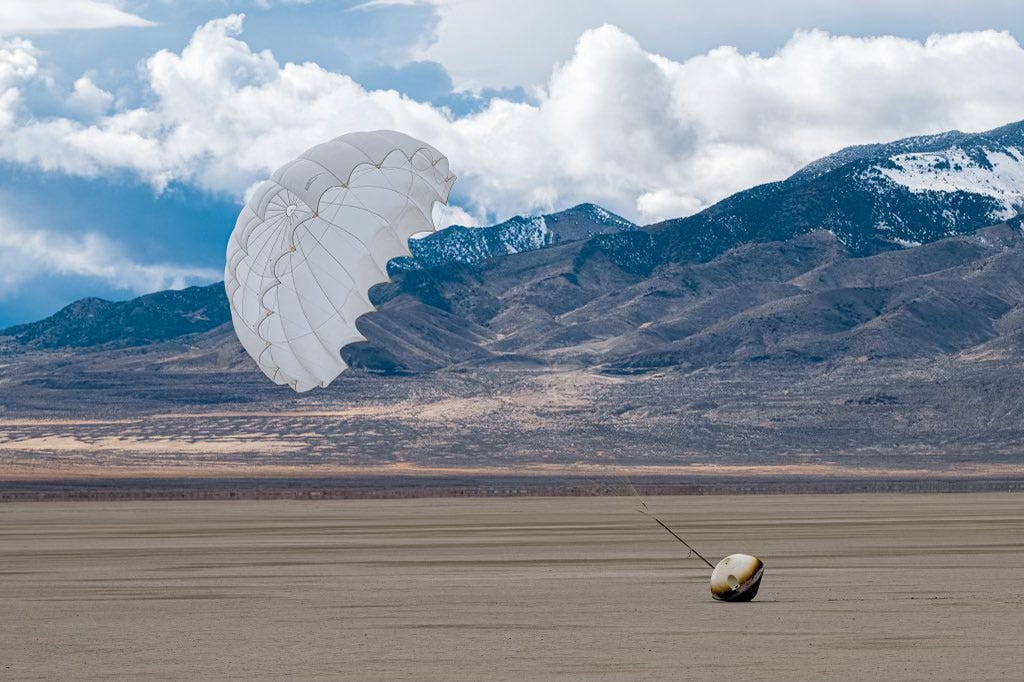
Events to Watch in 2025
The year 2025 is very intriguing! Let's briefly mention the plans:
SpaceX plans to launch a Starship every 2 weeks nd carry out as many as 25 launches this year!
New Blue Origin's NewGlenn rocket, which will feature reentry stages landing on floating platforms
Up to 2 launches under the CLPS lunar commercialization program (Blue Ghost from the private company Firefly and Nova-C from Intuitive Machines, which will carry the IM-2 neutron drill to search for ice on the Moon).
iSpace's Hakuto-R, a private Japanese lunar rover, will head to the Moon.
Tests of India's manned spacecraft.
Launches of Rocket Lab's Neutron rocket.
Sierra Space is set to launch Dream Chaser finally.
Space Fram-2 by SpaceX - polar orbital tourist missions over the poles.
The launch of Vast's Haven-1, a private orbital station.
The launch of Escapade to Mars, pending the success of NewGlenn.
Throughout the year, China will host debut flights of private and semi-public rockets.
It's intriguing, and we're very excited!
We live in exciting times with humanity making new steps in the lunar program, New Space Sector development, Mars and Deep Space exploration. We hope you will contribute to humanity's space future as well. If you need our help, please shoot us an email via hello@spaceambition.org. The sky is not the limit. It is just the beginning!







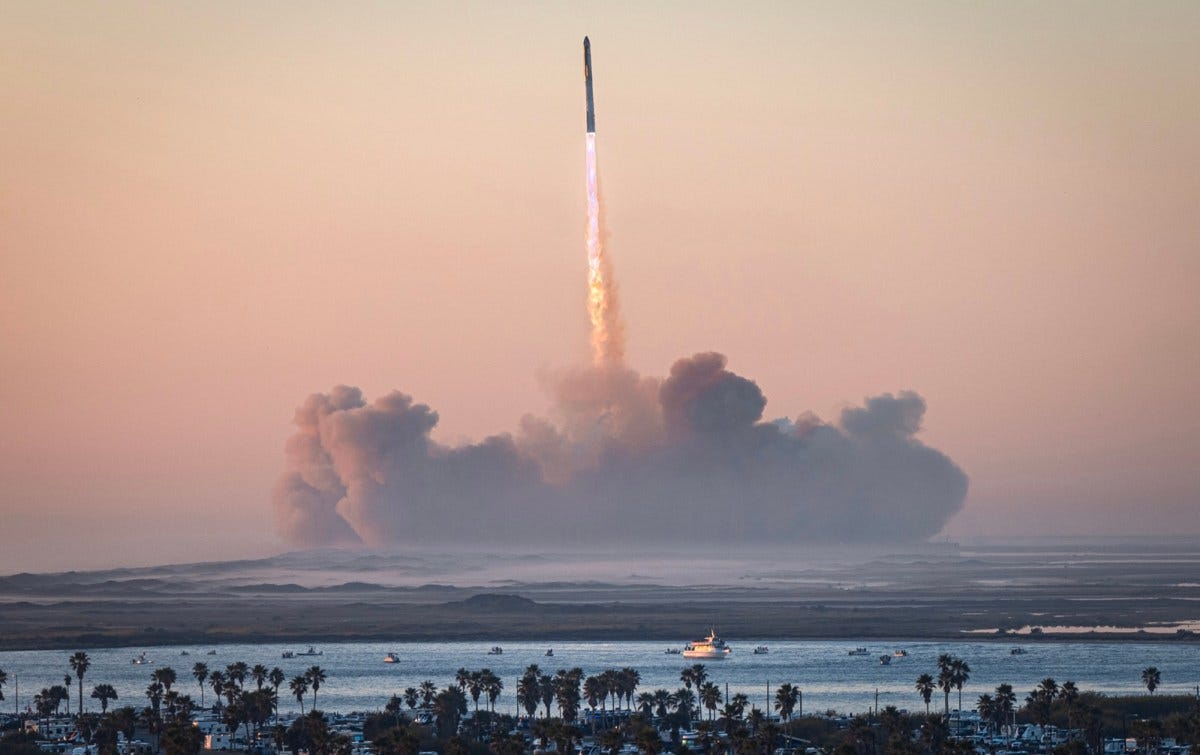


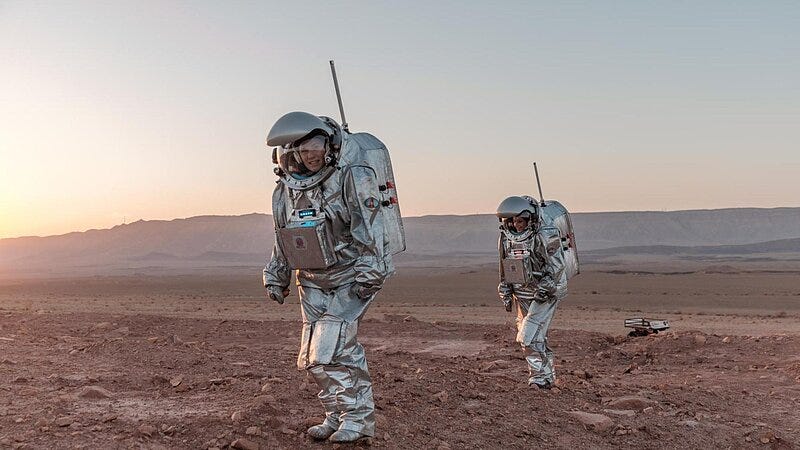
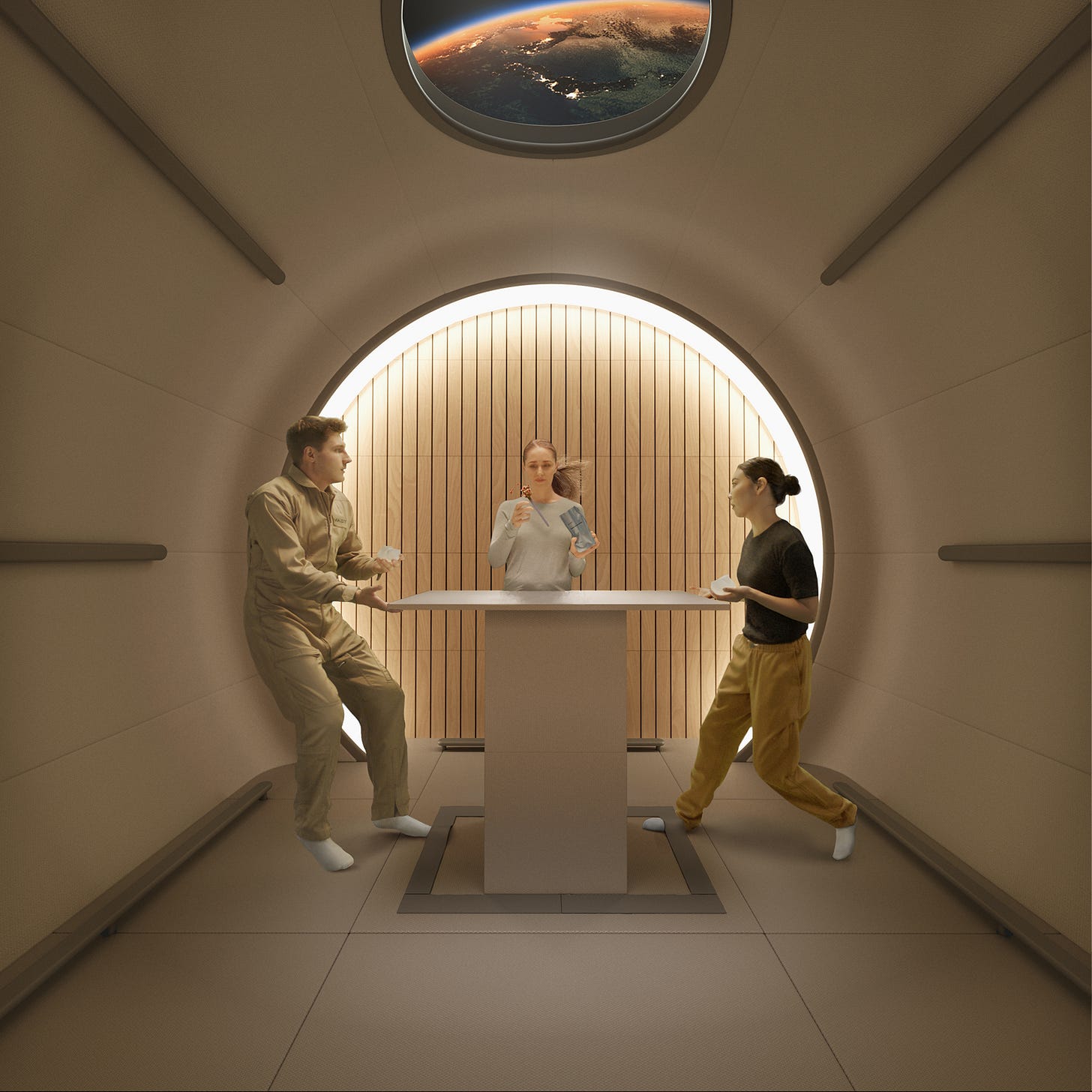
It's just wow! Thanks for the comprehensive overview. Really cool!